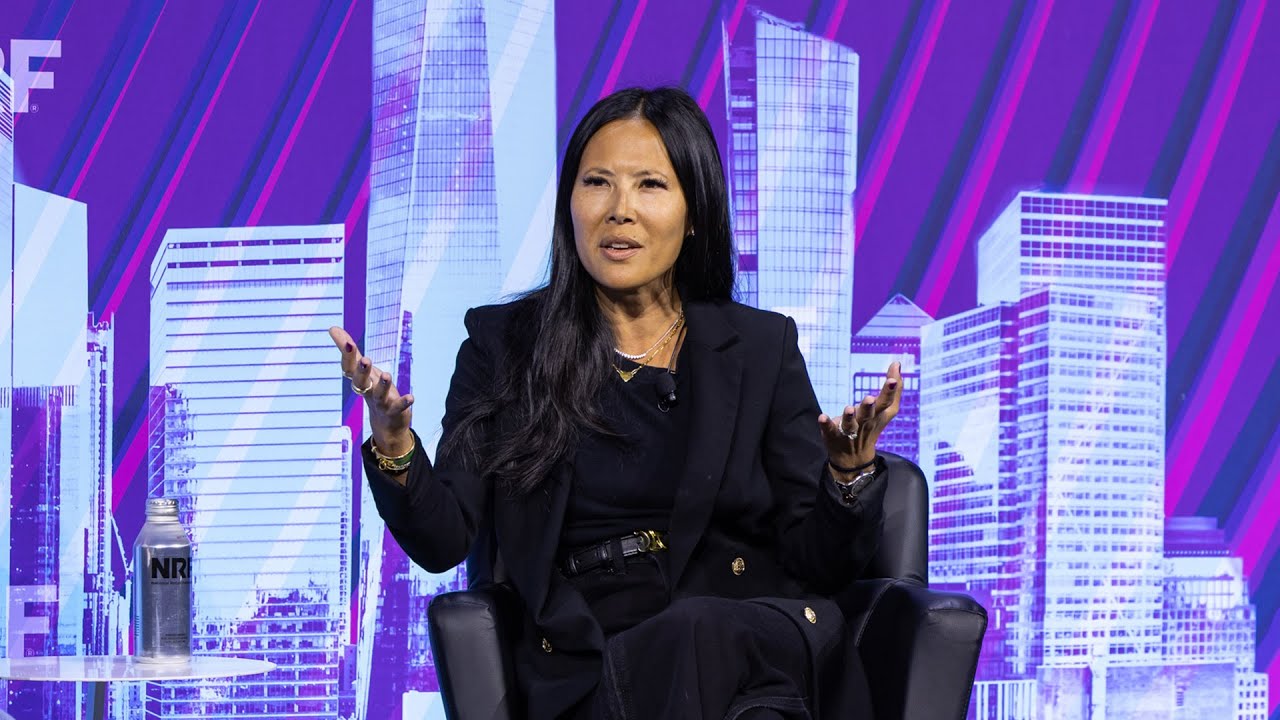Catching the social shopping wave with H&M and Havaianas
NRF 2025: Why social commerce is here to stay
Linda Li, head of customer activation and marketing for H&M Americas, discusses how the brand has leaned into influencer marketing and how it changes the traditional marketing funnel.
Fernando Rosa, president of Havaianas Brazil, has a message for TikTok Shop: Come to Brazil.
“TikTok Shop in Mexico is just starting, so I think we’re close. We’ve been having conversations here at Big Show, and we’re investing,” Rosa said during a panel discussion at NRF 2025: Retail’s Big Show with Linda Li, head of customer activation and marketing for H&M Americas, and Sky Canaves, principal analyst of retail and ecommerce at EMARKETER.
“Our plan is, when TikTok shows up, we’ll be ready to start,” he said. “We want to be ready to go on day one.”
Right now, Brazil’s government has restricted use of TikTok and other social media platforms over concerns about social media’s effects on young users. Nevertheless, the country ranks third on the list of users by country with 111.3 million TikTok users; Rosa said Havaianas has 1 million people engaged with the brand on the platform.
The flip-flop brand has found some clever workarounds, including collaborating with international influencers — as well as high-fashion Italian brand Dolce & Gabbana, the result of which sold out within the first 48 hours of the product launch.
Regardless of government bans or restrictions on social media platforms, social commerce — buying and selling directly through social media platforms including Facebook, Instagram and TikTok — is here to stay, according to Canaves. “It’s part of a much broader shift taking place globally in how new and younger consumers interact with retail,” she said.
Social commerce is already big in Asian countries, Canaves said, including China where nearly one-third of online sales are via social platforms like Douyin, the Chinese version of TikTok. While social commerce makes up a much smaller percentage of sales in the United States — 6.6% — it is growing rapidly.
“Social buyers are a real force to contend with,” she said. “They are already here. We cross the 100 million mark at the end of 2024 and we’ll add a few million more this year.”
With its combination of live shopping, shoppable video and in-app storefronts for retailers, TikTok Shop has showed how social commerce can take off in the U.S., Canaves said, while noting that TikTok Shop reported $100 million in Black Friday sales, up about 300% from 2023.
At multinational fashion retailer H&M, social commerce plays directly into one of its main marketing strategies — tapping into influencers. “For us, social commerce has primarily been in the realm of influencer marketing,” Li said. “I think that what makes it so special is that you’re able to hit on brand building, awareness, consideration and conversion, truly all at once. It’s turned the marketing funnel a bit on its head.”
The challenge isn’t in finding collaborators or partners — it’s in building trust with the customer on each platform and having a strategy that integrates the various marketplaces, including closed platforms like social commerce.
“It’s important to be really deliberate in defining your holistic, [or] omnichannel strategy, and I think you can be deliberate and distinct about what you’re aiming to get out of each channel,” Li said.
“On social commerce, you may be very specific and say, ‘we want to move into social commerce to drive customer acquisition.’ Or, ‘we want to move into social commerce to be able to drive engagement with younger generations.’ And I think the minute you start to put it together in this deliberate way, you can really understand and optimize the role each channel plays for your brands.”
Livestreaming sales could be the next big thing in social commerce, according to Li. It’s already massive in China, where a large portion of online shopping takes place during livestreams on platforms like Taobao, Douyin and Kuaishou.
“In the U.S., we’ve tested it a bit at H&M, various types of livestreaming, and I will be honest with you, we have not necessarily seen the engagement or conversion numbers to make us believe in it quite yet,” she said.
“The more that it develops, the more influencers will really start to learn and home in on that craft of livestreaming as well, and that may help to build ground around it going forward.”
Regardless of any government interventions, bans or restrictions that are put in place, Li and Rosa agreed that social commerce will break through and continue to grow. Brands will continue to invest and test the waters in a variety of social platforms like Pinterest, Snapchat and Roblox — and, if necessary, adapt.
“The name of the game in retail in general is change and uncertainty, and truly the unexpected,” Li said. “You have to remain agile and flexible as a brand.”
Source: NRF blog posts




